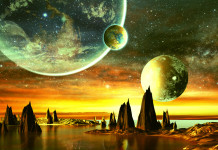NASA’s aptly-named Dawn spacecraft is on a mission to learn more about the origins of our solar system. On its rather important and extensive mission, Dawn set out to gather information on a large asteroid (Vesta), and a dwarf planet (Ceres).
On February 12th, Dawn sent to Earth the sharpest images captured of Ceres to date. Taken at a distance of 52,000 feet from the surface of this previously blurry dwarf planet, these photos reveal countless craters on the planet, as well as “bright spots” that are, at this point, quite the mystery.
Scientists at NASA are very ready to discern the nature of Ceres’ many craters and the source of these bright white flecks on the lesser-known planet. Chris Russel, the principal investigator for the Dawn mission, states, “We expected to be surprised; we did not expect to be this puzzled.”
The maverick spacecraft previously explored the protoplanet Vesta, revealing gullies that suggest the past presence of water on the celestial body. The carving of these gullies by debris flows were once thought to be a process exclusive to planets. Vesta has no atmosphere and exists at an extremely low temperature, meaning there is no ability for the giant asteroid to retain water in any form. This bit of perplexing knowledge led scientists to believe that frozen water was deposited below the surface of Vesta by a comet, only to be later freed and liquefied by another impact. The water would then flow briefly, carrying with it dust and debris (which help slow evaporation), carving out a narrow, long gully before the water evaporated in the absence of atmospheric pressure. “If present today, the ice would be buried too deeply to be detected by any of Dawn’s instruments,” said Jennifer Scully, a post-graduate researcher at the University of California.
Having left Vesta behind, Dawn is now nearing its second and final destination, the dwarf planet Ceres. Dawn is set to arrive at Ceres on March 6th, where it will go into orbit around the tiny, freezing spheroid. Once there, the spacecraft will send back a plethora of the most crisp and clear images of the planet possible, offering a chance for scientists to figure out what the surface of the planet holds, the nature of the craters and most importantly, the source of the bright flecks that have only recently come into clarity as Dawn nears Ceres.
By comparing the giant asteroid with the dwarf planet, NASA hopes to learn more about the origins of our solar system and the matter in it. These two celestial bodies have been chosen because they have remained relatively intact since the creation of our solar system, and because, from what scientists can tell, their growth was stunted by the formation of Jupiter. Any differences or similarities between the two could lead to very important conclusions regarding the origins of our little heliocentric array.

















